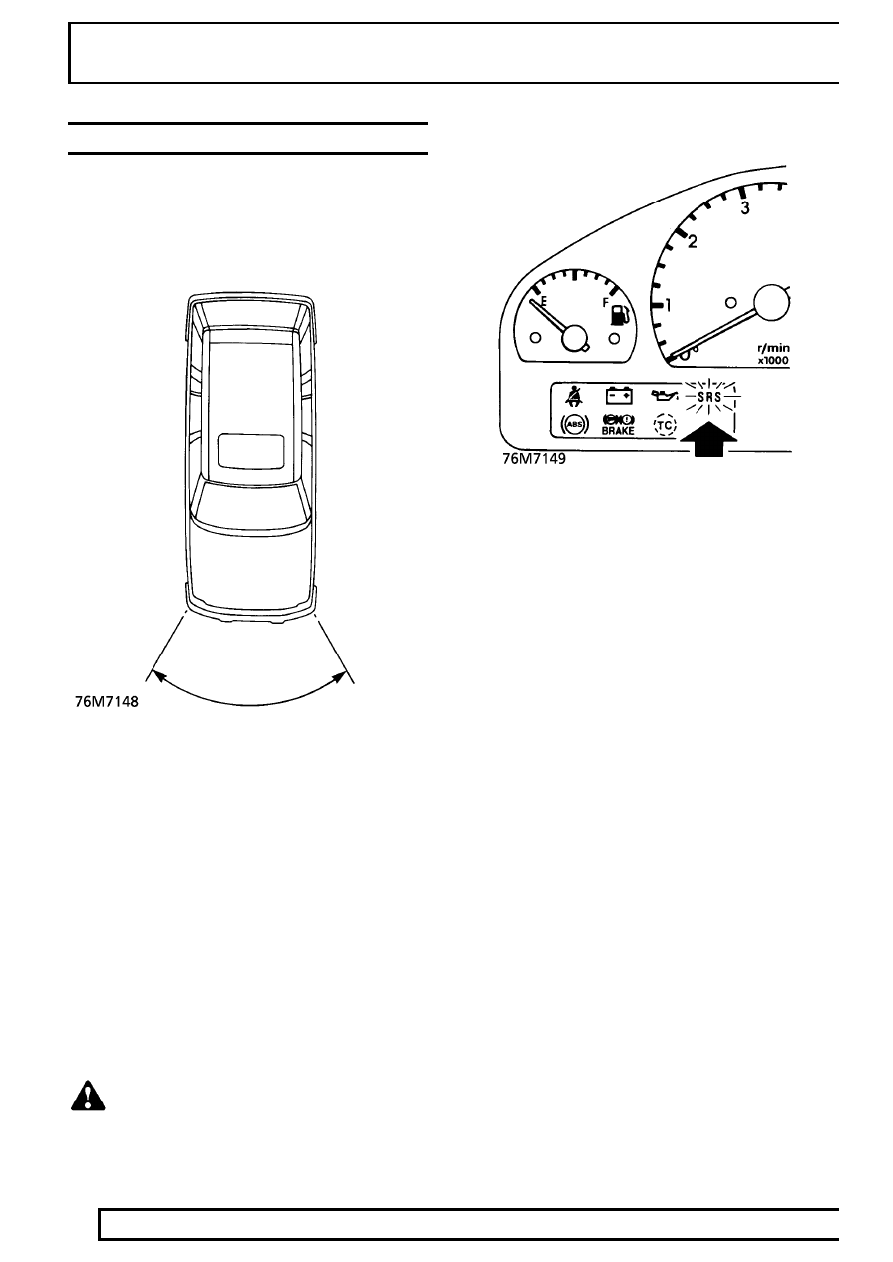Range Rover Body Repair Manual - part 13

75
SUPPLEMENTARY RESTRAINT SYSTEM
NEW RANGE ROVER
4
DESCRIPTION AND OPERATION
OPERATION
The airbag supplementary restraint system (SRS) is a
safety device which, when used in conjunction with
the seat belt, is designed to protect the driver and
front passenger in the event of a frontal collision.
The diagnostic control unit (DCU) is able to distinguish
between rough road conditions and a frontal collision.
If the DCU detects a frontal collision of sufficient
severity, it sends a fire signal to the airbag module
initiators. The initiators ignite tablets of sodium azide
which generate a large amount of Nitrogen gas
leading to airbag inflation in approximately 30
milli-seconds.
As the occupant moves into the fully inflated airbag,
the nitrogen gas discharges from vent holes in the
rear of the airbag. As the airbag deflates, it provide
progressive deceleration for the occupant and
reduces the risk of injuries. The process from airbag
initiation to deflation is completed in approximately 0.3
seconds.
WARNING: All the airbag system
components, including the wiring harness,
MUST be renewed after airbag
deployment.
SRS warning light
The airbag system carries out a system check every
time the ignition is switched to position 2. During the
system check, the instrument pack warning light is
illuminated to provide a bulb check. The warning lamp
is extinguished when the system check is complete,
after about 5 seconds.
If a system fault is found during the initial system
check or subsequently during driving, the warning light
will illuminate, indicating to the driver that there is a
fault with the airbag system. With the warning light on,
the airbag system will not operate in the event of a
frontal collision. The DCU records system faults in an
internal memory. The memory can be interrogated
using TestBook via the diagnostic socket located on
the passenger side fascia closing panel.